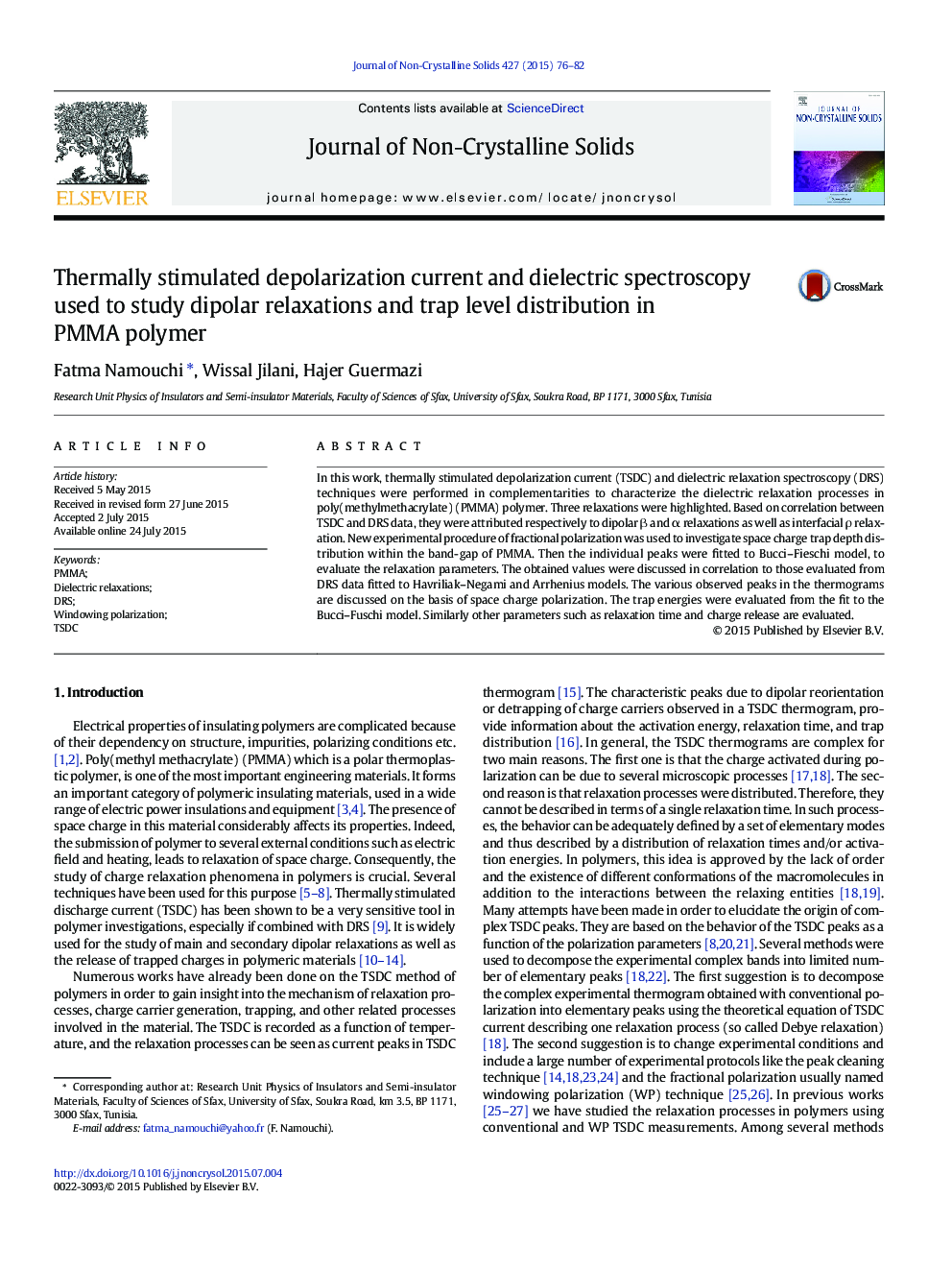| Article ID | Journal | Published Year | Pages | File Type |
|---|---|---|---|---|
| 1480667 | Journal of Non-Crystalline Solids | 2015 | 7 Pages |
•New experimental procedure (CDTS) was used to investigate space charge in PMMA.•Four relaxation γ, β, α and ρ were revealed.•Relaxation parameters were evaluated using windowing polarization (WP).•The trap energies were evaluated from the fit to the Bucci–Fuschi model.
In this work, thermally stimulated depolarization current (TSDC) and dielectric relaxation spectroscopy (DRS) techniques were performed in complementarities to characterize the dielectric relaxation processes in poly(methylmethacrylate) (PMMA) polymer. Three relaxations were highlighted. Based on correlation between TSDC and DRS data, they were attributed respectively to dipolar β and α relaxations as well as interfacial ρ relaxation. New experimental procedure of fractional polarization was used to investigate space charge trap depth distribution within the band-gap of PMMA. Then the individual peaks were fitted to Bucci–Fieschi model, to evaluate the relaxation parameters. The obtained values were discussed in correlation to those evaluated from DRS data fitted to Havriliak–Negami and Arrhenius models. The various observed peaks in the thermograms are discussed on the basis of space charge polarization. The trap energies were evaluated from the fit to the Bucci–Fuschi model. Similarly other parameters such as relaxation time and charge release are evaluated.
